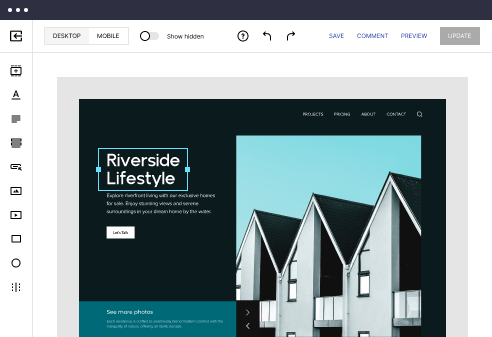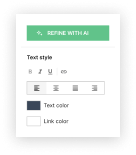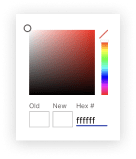
HTML page template with interactive onboarding form
Explore Similar TemplatesAbout template
Use HTML page templates with interactive onboarding form and make your communications easy and transparent. Try our solution today.
Recommended templates
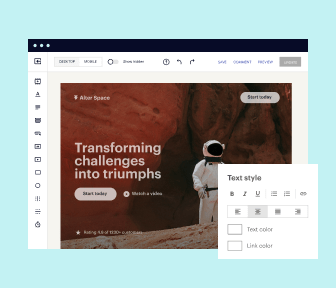
Easy to build without coding
With the intuitive drag-and-drop builder, anyone on your team can create high-converting pages without any knowledge of code or design. Make enhancements to your landing page with custom widgets using Javascript, HTML/CSS, or third-party scripts.
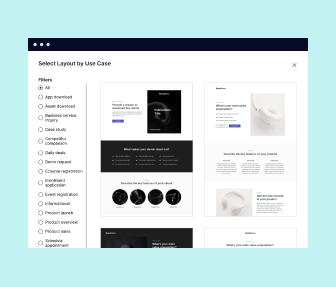
Multiple layouts for any industry and goal
Select from 500+ landing page layouts built to boost conversions across industry-specific scenarios. Customize them by adjusting fonts, adding images, and generating on-brand content with the AI assistant. Quickly scale with Instablocks® and Global Blocks that you can save, reuse, and update globally.
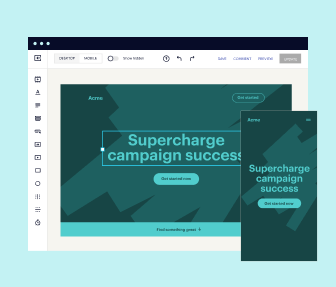
Loads fast and looks polished on any device
Every template is responsive, which means they present professionally on any device and load blazingly fast with our Thor Render Engine. You can also power them up with Google AMP technology to deliver an unparalleled mobile experience and drive higher conversions.
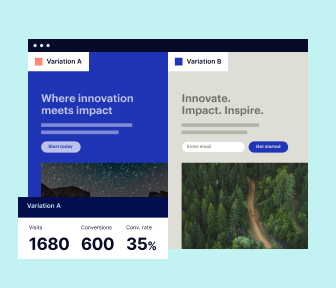
Robust analytics & experimentation
Get real-time updates and reporting across all your devices, showing the number of visitors, conversions, cost-per-visitor, and cost-per-lead. Launch AI-powered experiments, run A/B tests, and use heatmaps to analyze user behavior, then optimize your landing page to maximize conversions.
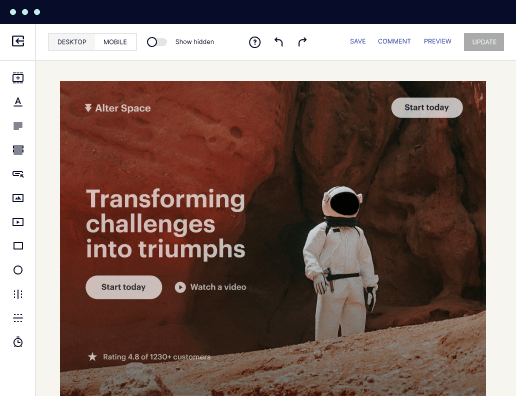
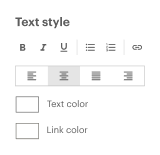
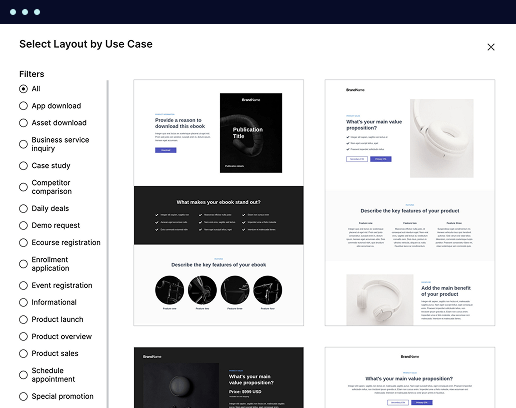
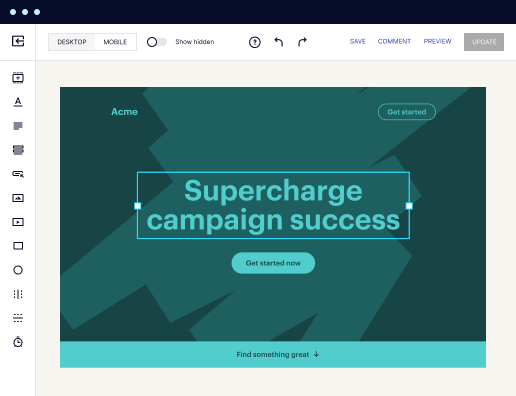
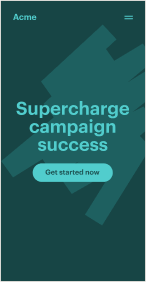
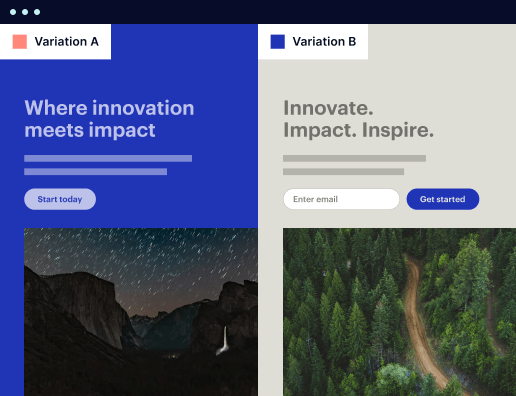
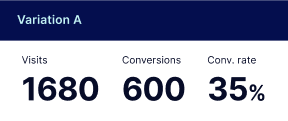
Easy to build without coding
With the intuitive drag-and-drop builder, anyone on your team can create high-converting pages without any knowledge of code or design. Make enhancements to your landing page with custom widgets using Javascript, HTML/CSS, or third-party scripts.
Multiple layouts for any industry and goal
Select from 500+ landing page layouts built to boost conversions across industry-specific scenarios. Customize them by adjusting fonts, adding images, and generating on-brand content with the AI assistant. Quickly scale with Instablocks® and Global Blocks that you can save, reuse, and update globally.
Loads fast and looks polished on any device
Every template is responsive, which means they present professionally on any device and load blazingly fast with our Thor Render Engine.
Robust analytics & experimentation
Get real-time updates and reporting across all your devices, showing the number of visitors, conversions, cost-per-visitor, and cost-per-lead. Launch AI-powered experiments, run A/B tests, and use heatmaps to analyze user behavior, then optimize your landing page to maximize conversions.
All the features you need to build website design onboarding form template
Explore more featuresLearn how to build scavify cost
Frequently asked questions about how much does scavify cost
Leading the way in building high-performing landing pages





Onboarding html template: Your ultimate how-to guide
Creating high-converting landing pages is essential in today's competitive digital landscape. Instapage, the most powerful landing page and CRO platform, provides marketers the tools to accelerate and optimize their campaigns. In this guide, we will walk you through the process of utilizing Instapage to enhance your digital marketing efforts effectively.
Understanding the Importance of Landing Pages
Landing pages are crucial touchpoints for converting visitors into leads or customers. Optimizing these pages means focusing on design, messaging, and user experience. Instapage offers a variety of templates and elements that help streamline this process for marketers in diverse sectors like education, tech, and financial services.
- Customization: Tailor landing pages to target specific demographics and industries using dynamic content.
- Analytics: Utilize in-platform analytics to monitor performance and adjust strategies in real-time.
- A/B Testing: Experiment with different layouts and copy to find the most effective combinations.
Step 1: Leverage Instapage's Templates
Start creating your landing page by selecting from over 100 high-converting templates. These templates are designed to cater to various industries and use cases, ensuring you can quickly develop a page that resonates with your audience.
Step 2: Optimize for Conversion
Once the template is selected, the next step focuses on conversion optimization. Utilize Instapage's built-in tools such as heatmaps and A/B testing features. Consider these elements to enhance your landing page:
- Clear Calls to Action: Use compelling CTAs to guide user engagement.
- Visual Hierarchy: Organize content effectively to draw the eye to essential elements.
- Mobile Responsiveness: Ensure that your landing page is optimized for mobile users.
Step 3: Personalize User Experiences
Personalization is key to improving user experience and increasing conversion rates. Take advantage of Instapage's dynamic text replacement features to align landing page content with specific ad campaigns and audience segments.
- Dynamic Content: Automatically change text based on the user's previous interactions or referring sources.
- AdMaps: Connect your ads directly to tailored landing pages, ensuring continuity in messaging.
- Tracking: Use audience level metrics to refine your content further based on engagement data.
By following these steps, marketers can create effective landing pages that not only attract visitors but also convert them into customers. Instapage's unique features provide significant advantages throughout the process.
Ready to transform your digital marketing campaigns? Start your free trial of Instapage today and experience the benefits first-hand!
People also ask about onboarding website template
The evolution of employee onboarding: harnessing html templates for interactive forms
The importance of effective onboarding
Onboarding is a crucial process that integrates new employees into an organization. A well-structured onboarding program not only introduces employees to their roles but also integrates them into the company culture. Effective onboarding minimizes the learning curve and allows new hires to contribute meaningfully within a shorter time frame.
Statistics reveal that organizations with strong onboarding processes can improve retention rates by over 80%, significantly boosting employee satisfaction. However, traditional onboarding has often relied on tedious paperwork and prolonged orientation sessions that may disengage new hires rather than inspire them.
Improved retention rates: Companies with good onboarding processes retain around 82% of their employees.
Boost in employee satisfaction: Engaged onboarding can increase job satisfaction levels significantly.
Consequently, the transition from paperwork to engaging onboarding experiences is necessary, highlighting the potential of interactive HTML templates.
Crafting a seamless experience: the role of html page templates
HTML page templates serve as a foundational framework for creating onboarding forms that are appealing, functional, and user-friendly. These templates provide a standardized design and flow that can speed up the onboarding process, ensuring consistency across all employee experiences while allowing for various customization options. Utilizing these templates can help businesses streamline their onboarding procedure without sacrificing their brand identity.
One key advantage of using templates is the efficiency they bring to development. Companies can quickly create forms that are responsive and optimized for all devices. This is essential, as a significant portion of the workforce now engages primarily through mobile devices.
Consistency in branding ensures cohesive experiences across various platforms.
Time efficiency in development saves both resources and reduces onboarding time.
Built-in responsiveness guarantees a seamless experience whether on a desktop or mobile device.
Finding the right balance between customization and standardization allows organizations to maintain their unique identity while still benefiting from the efficiency of HTML templates.
Key features of interactive onboarding forms
An effective onboarding form does more than collect data; it should provide a user-friendly interface designed to enhance the overall experience for new hires. The layout should guide users intuitively through the onboarding process, ensuring that information is presented clearly and accessibly. Ever-improving accessibility standards advocate for inclusivity, making it essential to incorporate features that accommodate all employees.
Dynamic input fields can significantly ramp up the effectiveness of data collection. Adaptive questionnaires that change based on previous responses make forms less overwhelming and more engaging. For instance, if a user indicates that they have a prior work experience in a certain field, subsequent questions can tailor to that background, ensuring relevance.
User-friendly interface promotes ease of use through intuitive design.
Dynamic input fields allow tailored data collection.
Real-time validation and feedback enhance user engagement.
Real-time validation and feedback mechanisms can significantly enhance user engagement. Providing instant notifications about errors or confirmations can make the onboarding process feel interactive, reducing frustration and encouraging completion.
Integrations and compatibility: connecting with existing systems
Integration with existing HR management systems is another pivotal feature of interactive onboarding forms. It ensures a seamless flow of data, reducing the time spent on manual data entry and improving efficiency. Organizations can track new hires' progress in real-time, highlighting how intertwined these forms can be with everyday operations. Various HR platforms support these integrations, creating an overall enhanced experience for both employees and employers.
Furthermore, APIs can extend the reach of onboarding forms. By embedding them within other applications, businesses can enhance their onboarding processes, no longer restricted to standalone forms.
Integrating with HR management systems streamlines data flow and tracking.
Form integrations across platforms can enhance engagement.
Data security and compliance measures protect sensitive employee information.
Ensuring data security and compliance is paramount, especially as organizations aim to protect sensitive employee information. Keeping up with the latest regulations is crucial for building trust with new employees.
Utilizing templates for diverse employee needs
Customizable templates can adapt to different roles and levels within an organization. An onboarding form designed for a technical position will differ significantly from one for a customer service role, reflecting the unique prerequisites and training each require. Companies can optimize the onboarding experience by tailoring these forms to suit specific departmental demands.
Interactive forms can also be used to collect personal stories and experiences from new hires, fostering a sense of community from the outset. Sharing insights can help bridge gaps among employees, emphasizing the importance of belonging and connection.
Customizable templates for various roles ensure relevance.
Collecting personal stories can promote community building.
Encouraging storytelling through onboarding forms transforms an otherwise monotonous process into an engaging experience that new employees will appreciate.
Enhanced registration processes through interactive forms
Moving from static to dynamic registration processes can significantly enhance new hire experiences. A step-by-step registration form that reacts to user input creates an interactive onboarding journey. By actively engaging employees, companies gather required information while providing valuable guidance to support them during their transition.
Adding visual elements, such as animations and multimedia prompts, further enhances the appeal of onboarding forms. Integrating videos that explain the culture or provide instructions can create a more vibrant onboarding experience that piques new hires' interest.
Transforming basic registration into a guided, interactive experience.
Visual elements enhance engagement and retention of information.
Ultimately, these enhancements not only facilitate the onboarding process but also leave a lasting impression on new hires, setting the tone for their journey ahead.
The cost of custom development vs. using existing solutions
When considering the development of onboarding forms, companies face a choice between custom solutions and templated systems. Custom development can bring high flexibility and tailored experiences but may lead to significant costs and extended timelines. By utilizing existing HTML templates, organizations can dramatically reduce development time and costs while still achieving an effective and visually appealing onboarding process.
Template solutions often offer numerous features that can be adapted to specific needs, ensuring employees enjoy a rich onboarding experience without the burdens of extensive customization.
Pre-built templates offer quick access to functional designs.
Evaluating long-term costs often favors templated solutions.
Flexibility in scaling allows adaptation as companies grow.
With the ability to upgrade features and add new fields as necessary, template solutions provide a sustainable approach for growing organizations.
Success stories: real companies transforming onboarding with interactive forms
Many organizations have already seen tremendous success with interactive HTML forms. For instance, a tech start-up tackled onboarding inefficiencies by integrating interactive forms into their recruitment workflow. Employees reported feeling more engaged during the onboarding process, leading to higher retention rates and faster acclimatization into corporate culture.
A large corporation standardized its onboarding process using templates and succeeded in maintaining consistent onboarding experiences across various departments. These implemented strategies provided measurable outcomes, fostering a culture of continuous improvement that sustained employee engagement.
Start-up introducing interactive forms saw increased engagement rates.
Large corporation's efforts led to measurable outcomes and culture consistency.
These examples showcase the effectiveness of interactive forms in creating dynamic onboarding experiences that resonate with employees across various industries.
Building a culture through onboarding: the bigger picture
Onboarding is the first introduction new employees have to an organization's culture and values. By embedding company values into onboarding forms, businesses can create a stronger connection with employees right from the start. By actively promoting inclusivity and engagement, organizations set the tone for the types of relationships they expect from their employees.
Long-term initiatives for employee engagement are crucial, and effective onboarding forms play a significant role in this strategy. Following up with forms to gather feedback and checking in with employees can help maintain communication long after the initial onboarding process concludes.
Linking onboarding with company values promotes a cohesive culture.
Feedback mechanisms optimize ongoing communication with employees.
Such initiatives make lasting impressions, fostering employee longevity and loyalty.
Future trends: evolving html forms and onboarding experiences
As technology advances, the landscape of onboarding is set to evolve. Future tools are likely to incorporate artificial intelligence and machine learning to create personalized experiences based on employee data. This evolution opens doors for gamifying the onboarding process, making it more engaging and interactive.
In the growing trend of remote work, companies must adapt their onboarding forms and processes to accommodate virtual environments. Carefully designed forms that maintain engagement and inclusivity for diverse teams will become increasingly essential.
AI and machine learning for enhanced personalization in onboarding experiences.
Gamification to increase engagement and interaction.
Adaptation of forms for remote work to ensure inclusivity.
Organizations willing to experiment with innovative approaches will likely find new avenues for building successful onboarding experiences that align with their evolving culture.
Ready to skyrocket conversions?
Supercharge your ad campaigns with high-performing landing pages
Get started